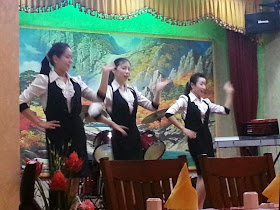Welcome to the Mission! Are you a new DLI? No? Are you a Contractor or a PSC? Oh, you're a Fellow!
That's right, there is an acronym soup for the many people that make up the personnel of USAID. It's not as simple as being just a hire of the Agency, rather, people come to the Missions and are classified through a wide variety of hiring mechanisms. The heart of the difference between all the classifications is funding source and compensation system but also includes to some degree the type of work.
The existence of so many different hiring mechanisms is a result of the budget process (Operational Funding and Program Funding), historical changes in government, and the nature of how development work has changed. It's quite a complicated system and I still wonder, at times, if there might be a more effective and easier to understand way of hiring.
Let's try to break-down the many classifications of employees that makeup USAID.
Civil Service
--These are the Civil Servants of the US Government. They are based out of Washington, DC working at the headquarters of USAID. They follow the
General Schedule (GS) salary scale and support the government's development programming from the US, but many will often travel to other countries (the field) in their work. Civil Service employees represent about half of the US direct-hire employees of the Agency.
Foreign Service
--These employees represent the majority of the US direct-hire employees of USAID working overseas. Known as career Foreign Service Officers (FSOs), they have a variety of
technical backstops, and represent the Agency and the US Government abroad. Unlike Civil Service employees, they are compensated on a different
Foreign Service pay-scale and follow rules from the
Foreign Affairs Manual (FAM). USAID has historically hired FSOs under various initiatives, and as a result, additional nicknames came about for newly hired FSOs based off of the initiative in which they were hired. These initiatives include "International Development Intern (IDI)", "New Entry Professional (NEP)", and "Development Leadership Initiative (DLI). The most recent initiative was DLI and hopefully, the Agency will be able to hire for attrition and per future staffing needs in the future. Uneven hiring for FSOs historically is a result of budget shortfalls, hiring freezes, and reductions in force (RIFs) in the Agency's history.
Foreign Service Limited (FSL)
--These are direct-hire employees of USAID who makeup a small portion of USAID's Foreign Service. They use the same pay-scale as typical FSOs but are generally limited to 5 years employment, but in some cases, they can be converted to career FSOs. Recently, the Agency hired many employees as FSLs to help support the staffing needs of "Critical Priority Countries (CPCs)" like Afghanistan and Iraq.
Fellow
--Fellows will join USAID for a couple years at a time as determined by the structure of the
Fellows program. The US Government has a variety of different programs and I'm really not knowledgeable on the details of them all. However, the most common Fellow's I've seen at USAID are "Presidential Management Fellows (PMFs)" and "American Association for the Advancement of Science (AAAS)" Fellows. Fellows have opportunities to work in Washington, DC as well as work abroad in the Mission.
Participating Agency Service Agreement (PASA)
--This is an arrangement where another US Government details employees to work at USAID. While the employee is working at USAID, they are still technically an employee of their home Agency. The majority of PASAs at USAID tend to come from the US Department of Agriculture (USDA), in my experience, and work alongside Civil Service employees in Washington, DC.
Personal Service Contract (PSC)
--USAID has a unique authority to hire employees on a contract basis but, who are for all practical purposes, essentially a US direct-hire. They are compensated in accordance to their contract which is generally based off the Civil Service pay-scale. They are employed to work at both Washington, DC and abroad but largely are hired abroad in the Missions. Historically, PSCs filled staffing shortages of FSOs and now more increasingly used to provide unique technical support that isn't found within the ranks of FSOs or Civil Service. PSCs can be US citizens (USPSCs) or third country nationals/citizens of a country other than the US or the country in which they are working (TCNPSCs).
Foreign Service National (FSN)
--FSNs makeup the significant majority of USAID employees overseas. These are the local employees of the countries in which USAID works. They are the backbone of the Missions providing Technical Support, Program Management, and Administration for all of USAID's activities. The typical Mission will have Rule of Law Specialists, Infectious Disease Specialists, Water and Sanitation Specialists, etc. providing vital technical and programmatic support. FSNs have the local knowledge, language skills, and expertise to bring effective development solutions to their home countries and are an essential component to sustainable development programs. FSNs are hired technically as a form of PSC and are compensated based off of local pay-scales and benefit plans.
Contractors
--While not under the direct employment of the US Government, they are indirectly employed by USAID and consist of the largest number of people working overseas supporting USAID's activities. Since the 1990's, the US Government increasingly relied on the private sector to perform many previously held functions of government employees. At USAID, almost all of the implementation of activities is now
outsourced to contractors and non-government organizations while strategy and project design is general held within USAID. Depending on how one would like to support USAID, working with as a Contractor might actually be a better option as the work would be closer to the field and the daily implementation of development work.
That's all the types of employees that comes to mind but would be curious to know if there are even more!































